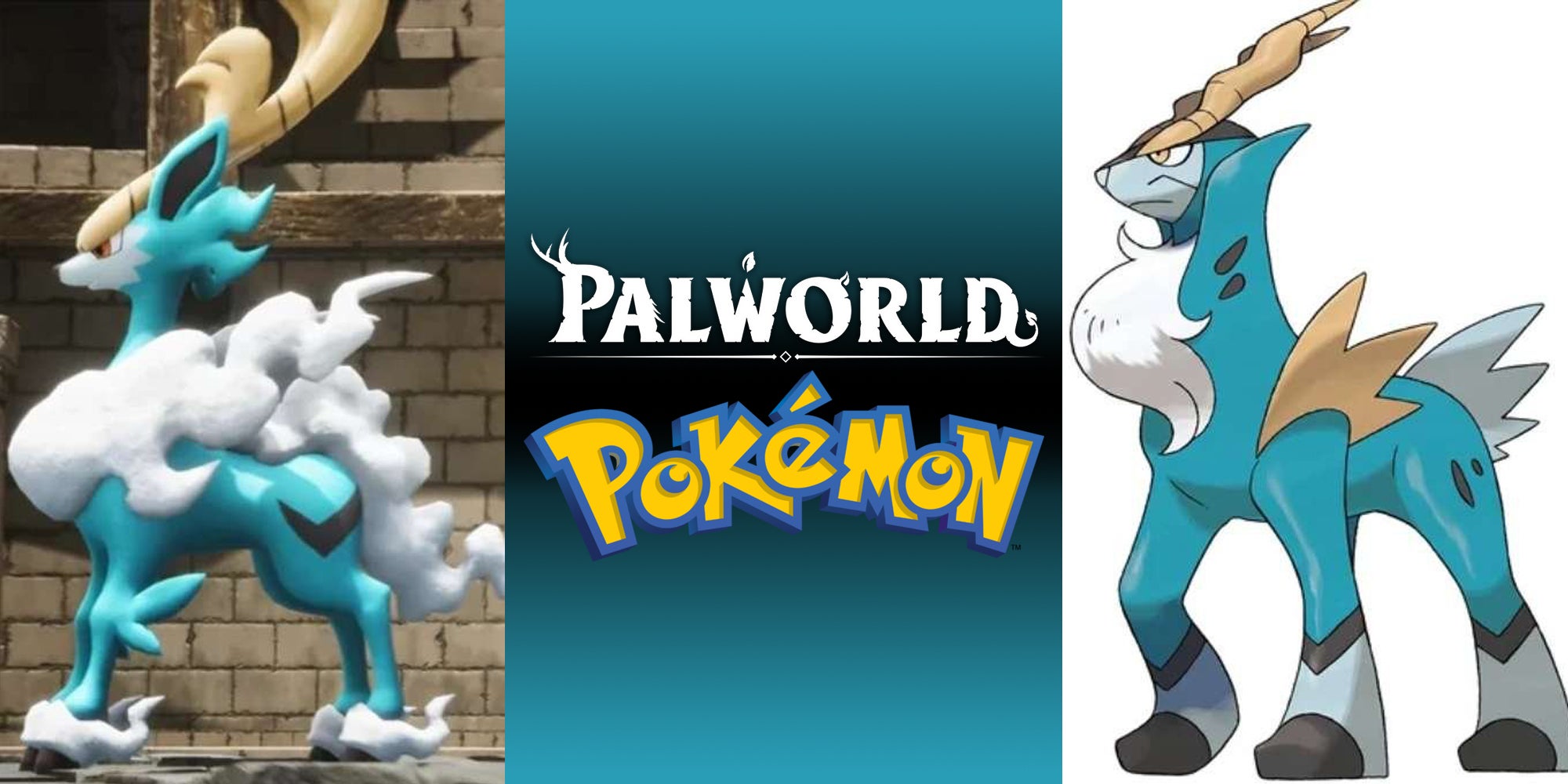
Palworld has only been out since Friday, but the monster-hunting game has already become a massive hit, selling over five million copies. Combining traits from other popular games like Fortnite, Minecraft, and, of course, Pokémon, players are thrust into a world where they need to capture these creatures, known as Pals, and use them to do their bidding.
Have a monkey help you plant seeds, use a llama as a mount, or fulfill your gruesome fantasies and chop them all up with a butcher’s knife to turn them into parts. The game is simple but also deeply sardonic, pushing the idea that monsters you use to battle and collect resources are more underlings than friends.
Made by the small Japanese indie studio Pocketpair, Palworld has already received some backlash. The designs of the 111 monsters feel a lot like those of Nintendo’s pocket monster hunting franchise Pokémon, with users all across the web pointing out similarities.
There’s even speculation that the monsters were created with generative AI, using programs with Pokémon-inspired prompts to pop out designs used in these games. On social media, Palworld’s been labeled the “first step in the normalization of generative AI slop games,” “blatantly creative bankrupt,” and it should be boycotted.
Yet, currently, there is no evidence that the game uses AI in any way, and any claims are based off anecdotal evidence from the studio and its founder. (Pocketpair did not respond to our request for comment via email by publication time.)
Studio founder Takuro Mizobe on his X account over the past few years has praised the use of artificial intelligence, when making art multiple times. According to Google Translate, he wrote in December 2021 that “AI has evolved so much that I can no longer tell which one is a Pokémon.” In November 2022, PocketPair released an AI party drawing game called AI Art Imposter.
Social media is rarely a place for nuanced discourse. Palworld’s success, combined with the fear that everything is made with artificial intelligence, has thrust it into potentially unearned controversy.
Mizobe wrote on X on Monday in Google Translated Japanese that his artists received death threats over the weekend. “I have received a variety of opinions regarding Palworld, but all productions related to Palworld are supervised by multiple people, including myself, and I am responsible for the production,” he said.
In the lead-up to the release of Palworld, Mizobe released a blog post detailing how the game came to be. According to Google Translate (the original post is in Japanese), this was the first time that the studio made character assets instead of buying them from other developers. Nobody on the team knew how to rig monsters, and they had to switch game engines, aka the software the game is built on, halfway through.
According to the post, Palworld’s original trailer, released in June 2021, was created to test the waters to see if there was any hunger for this type of game. But after the trailer went viral, Mizobe and his team got to work, hiring outside of the traditional gaming space — like a 20-year convenience store worker found on X. Eventually, the team spent over one billion yen (or about $6.7 million) without a pre-determined budget just to get the game out the door.
After playing Palworld for about a half dozen hours, I can say that the game is really fun. It can get a bit glitchy with characters running into each other or clipping inside of structures, but it’s still in Early Access, which means the bugs should hopefully get ironed out. The studio’s last game Cratopia, which is heavily inspired by The Legend of Zelda: Breath of the Wild, is still receiving patch updates three years after release.
Collecting a party of wacky monsters, riding them around the glorious landscapes, or using a fox as a flamethrower to take down bosses is something Pokémon fans have been dreaming of since the late ’90s. Pokémon is still the largest-selling IP in the world, and when those fans want something, they’ll turn it into a hit. The developer of Pokémon Go Niantic had no idea that their mobile game was going to be as big a hit when it was released in 2016, but it’s still a massive cash cow years later.
Boiling down Palworld to a Pokémon clone or an AI cash grab just isn’t fair to the hard work the developers put into it. They’ve made a game that can potentially last for years off of their grind and ambition. Sure, it utilizes a lot of mechanics and gimmicks from popular times, but it builds on all of those to make for a completely different experience.




